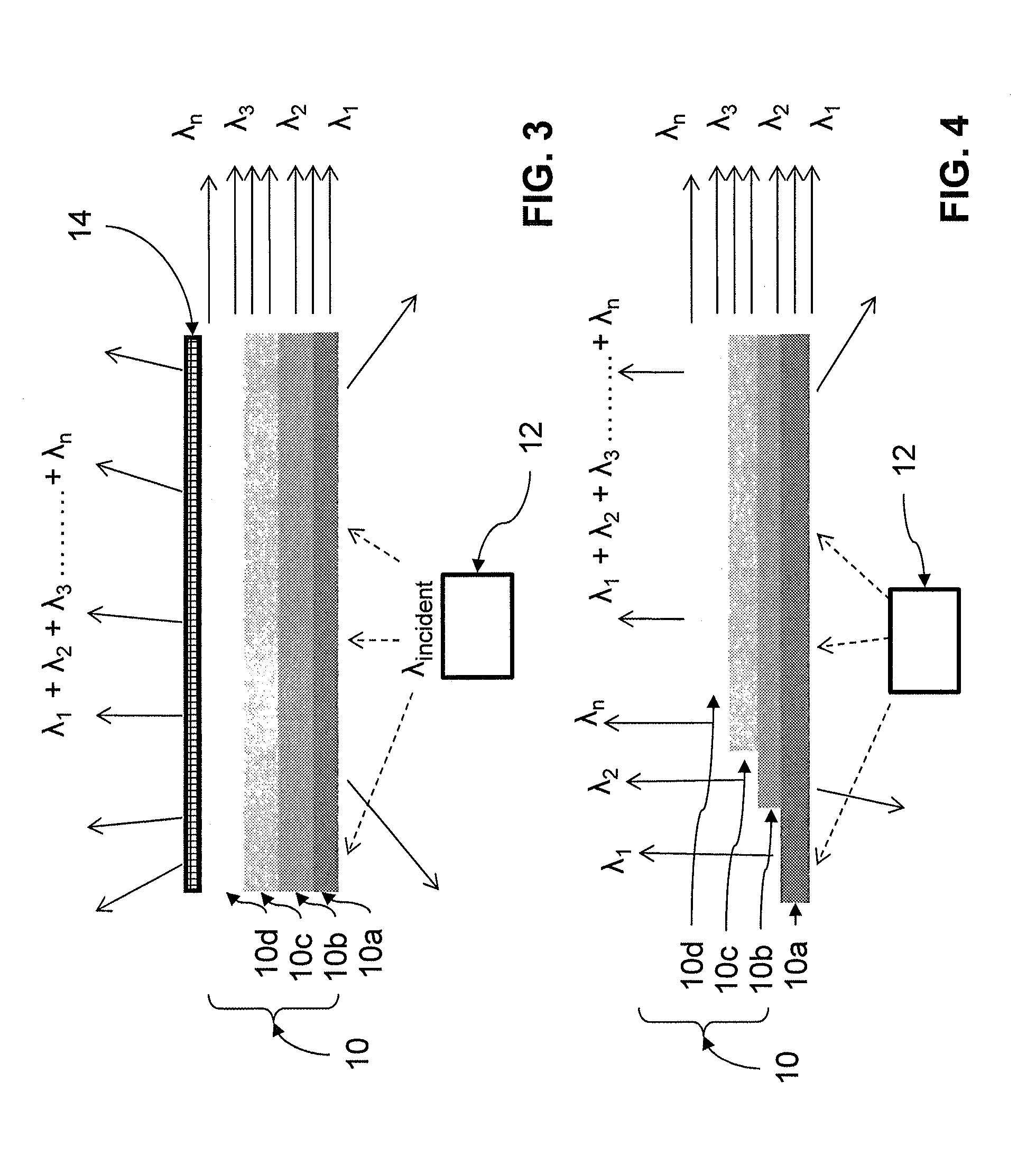Full spectrum solid state white light source, method for manufacturing and applications
- Summary
- Abstract
- Description
- Claims
- Application Information
AI Technical Summary
Benefits of technology
Problems solved by technology
Method used
Image
Examples
example
[0071]The invention will now be described by use of a non-limiting example. It will be understood that any number of the materials, substrates, systems, and the like described above may be used or configured in a number of different ways and be within the teachings of the present invention.
[0072]FIG. 9 shows a plot of the emission spectrum from a typical blue LED excitation source. As can be seen from the figure, the blue LED produces a limited wavelength emission range around 450 nm. FIG. 10, comparatively, shows a plot of the emission spectrum from a typical blue LED excitation source that has been passed through a graded crystalline phosphor substrate according to at least one embodiment of the present invention. The crystalline phosphor substrate tested was a graded composition of an alkaline earth metal thiogallate which typically has the formula MxMyA2aA2bS4 Eu2+; where M is one or more elements selected from the group consisting of Be, Mg, Ca, Sr, Ba, and Zn; and A is one or ...
PUM
 Login to View More
Login to View More Abstract
Description
Claims
Application Information
 Login to View More
Login to View More - R&D
- Intellectual Property
- Life Sciences
- Materials
- Tech Scout
- Unparalleled Data Quality
- Higher Quality Content
- 60% Fewer Hallucinations
Browse by: Latest US Patents, China's latest patents, Technical Efficacy Thesaurus, Application Domain, Technology Topic, Popular Technical Reports.
© 2025 PatSnap. All rights reserved.Legal|Privacy policy|Modern Slavery Act Transparency Statement|Sitemap|About US| Contact US: help@patsnap.com



